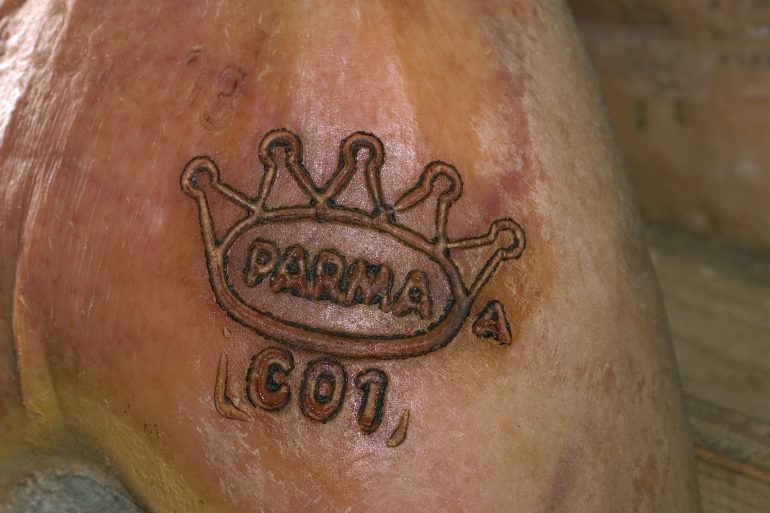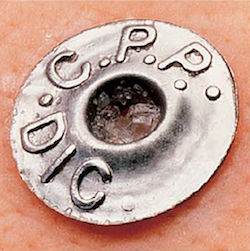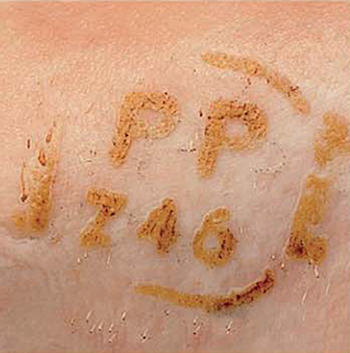Identifying Prosciutto Di Parma
Due to the strict regulations from the Consorzio, there are several different ways to identify a true leg (or package) of Prosciutto di Parma. If you cannot identify all of these, you don’t have the real thing in front of you.
On the Leg
The Parma Crown
The Ducal Crown stamped on each leg of Prosciutto di Parma is one of the most obvious ways to guarantee the product is authentic. The number under each crown specifies which factory in Parma the leg came from, ensuring traceability. The Parma Crown is not branded on the legs until an independent inspector examines and approves them according to Consorzio guidelines. If the legs fail, the end-product is not designated Prosciutto di Parma and cannot be sold as such.

Tags
 At the top of the leg you will find metal tags that indicate when the leg began curing, and which producer the leg came from. The tags are placed on the legs as soon as they arrive from the butcher.
At the top of the leg you will find metal tags that indicate when the leg began curing, and which producer the leg came from. The tags are placed on the legs as soon as they arrive from the butcher.
When purchasing Prosciutto di Parma “bricks,” part of the skin that features the Parma Crown and tags should still be intact to show the product is authentic. The only reason these items should be missing is if a kitchen staffer has already removed them.
Breeder Tattoo
Each pig receives a breeder tattoo, indicating its age and the farm on which it was raised.

Slaughterhouse Mark
Additionally, each leg is branded with a mark that identifies the slaughterhouse.

On the Package
Both the box and the label that the leg comes in must say Parma in order to ensure the product is genuine. For pre-sliced packages, the Parma Crown will be found in a black triangle in the top left corner. Many products claim to be “Parma Prosciutto,” but this doesn’t mean they passed the necessary requirements to be Prosciutto di Parma. Look for the Parma Crown to ensure you have the authentic version.
When ordering Prosciutto di Parma from your supplier, be sure to specify Parma specifically to the sales specialist. They will need to depict Parma on all invoicing. Though, just because your invoice said “prosciutto,” doesn’t mean it’s Parma.


